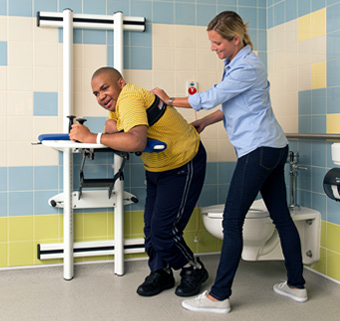The “What” of Ecological Assessment
Part 2 of The Ecological Assessment: The Why, the What, the How
| December 2021 In Part 1: The “Why” of Ecological Assessment, we addressed why we should invest in ecological assessment to support students in the Least Restrictive Environment (LRE), but what exactly is it?
In Part 1: The “Why” of Ecological Assessment, we addressed why we should invest in ecological assessment to support students in the Least Restrictive Environment (LRE), but what exactly is it?
Ecological assessment is a comprehensive process of assessment in which data on student performance is collected through observation across different environments and/or settings. It is a collaborative process that involves relevant stakeholders – parents, teachers, etc. It is a tool that uses peer performance and classroom expectations regarding activities and routines as the standard of measure, while assessing the impact of the instructional environment on functional performance and social interactions.1 “If a skill or activity cannot be observed or measured during a child’s normal school day, then it might not be relevant to the child’s educational needs.”2 Functional performance can be defined as the active involvement of the child with a goal-directed environmental approach.3 Through this approach, a comprehensive understanding of student performance in relationship to school expectations may emerge, and the application of that performance toward educational relevance may become clearer.
An ecological assessment can be conducted using a checklist created by a team or a therapist (sample checklist courtesy of Sequoia School-Based Therapy Solutions, LLC) using the typical routines of the school day such as arrival, dismissal, lunchtime, recess and classroom academics as its basis. The tasks within each routine, and how the student’s performance compares to typical peers and classroom expectations, can be objectively observed and documented. The “Scale of the Assessment of Teacher’s Routines” by Clingenpeel and McWilliams is a tool that uses an interview approach to determine how a student engages with classroom routines when compared to peers.4
The key to a successful ecological assessment is objective observation, using typical activities and routines of the school day and using peer performance and classroom expectations as the foundation of your work with the student. This approach will support you, as a related service provider, to implement educationally relevant services to support student participation in the Least Restrictive Environment.
See Part 1: The “Why” of Ecological Assessment and Part 3: The “How” of Ecological Assessment.
References
- Ecological Assessment, Innovations in School Based Physical Therapy Practice July 2021 Susan W. Cecere PT, MHS
- Robin L. Dole, PT, EdD, PCS, Kristin Arvidson, MS, PT, Eilish Byrne, MS, PT, Jodi Robbins, MS, PT, and Britta Schasberger, MS, (2003) Consensus Among Experts in Pediatric Occupational and Physical Therapy on Elements of Individualized Education Programs. Pediatric Physical Therapy. 159-166.
- Mellanie Geijena , Marjolijn Ketelaarb,c , Leanne Sakzewskid , Robert Palisanoe , and Eugene Rameckersa. (2020) Defining Functional Therapy in Research Involving Children with Cerebral Palsy: A Systematic Review. Physical & Occupational Therapy in Pediatrics 2020, vol. 40, no. 2, 231–24.6 https://doi.org/10.1080/01942638.2019.1664703
- The Scale of the Assessment of a Teacher’s Impression of Routines and Engagement retrieved September 29, 2021 from http://olms.cte.jhu.edu/olms2/data/ck/sites/4055/files/SATIRE.pdf







